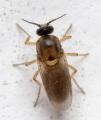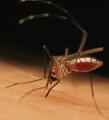Diptera.info :: Identification queries :: Diptera (adults)
|
Tephritidae: Rhagoletis fausta
|
|
| Tony T |
Posted on 04-08-2008 20:31
|
|
Member Location: New Brunswick, Canada Posts: 664 Joined: 08.02.07 |
4 Aug 2008, NB, Canada. Length 4.8mm. Tip of ovipositor is just 0.02mm wide 
Tony T attached the following image: 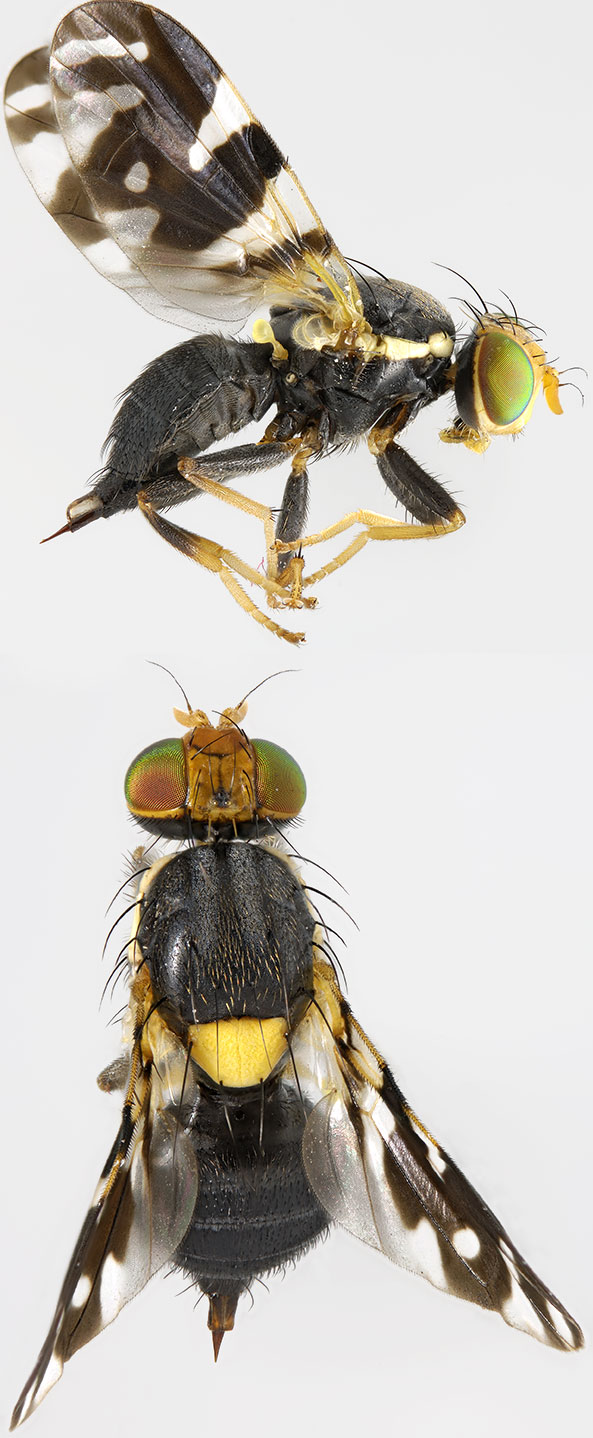 [154.96Kb] Edited by Tony T on 05-08-2008 15:55 |
|
|
|
| jorgemotalmeida |
Posted on 04-08-2008 22:43
|
|
Member Location: Viseu - PORTUGAL Posts: 9296 Joined: 05.06.06 |
No. Tony this is the fabulous Euleia heraclei.  (the winter version.. (the winter version..  ) I spotted one today as well. Yesterday I saw the orange "version" of this species. ) I spotted one today as well. Yesterday I saw the orange "version" of this species. |
| cosmln |
Posted on 04-08-2008 22:44
|
|
Member Location: Romania Posts: 956 Joined: 18.03.07 |
hi Tony, probably Jorge is right, i don't know bu this photo is really stunning. you are the best. cosmln |
| Tony T |
Posted on 05-08-2008 03:28
|
|
Member Location: New Brunswick, Canada Posts: 664 Joined: 08.02.07 |
jorgemotalmeida wrote: No. Tony this is the fabulous Euleia heraclei. Thanks for the hint. I checked the literature and the WWW based on your comments . It seems the NA species is the closely related Euleia fratria. The only other species in the genus, in NA, is found only in Alaska. Cosmin: I appreciate the comment; your shots of live flies are excellent. |
|
|
|
| Nosferatumyia |
Posted on 05-08-2008 07:03
|
|
Member Location: Posts: 3520 Joined: 28.12.07 |
It is a Rhagoletis fausta (Osten Sacken) female, the American black cherry fly, BTW, as I recall, recently introduced into Europe... The snapshots are, as always, excellent. Do you use fiberoptics for your flash? If yes, who supplies that stuff? Edited by Nosferatumyia on 05-08-2008 07:06 Val |
|
|
|
| jorgemotalmeida |
Posted on 05-08-2008 08:39
|
|
Member Location: Viseu - PORTUGAL Posts: 9296 Joined: 05.06.06 |
Rhagoletis...  ok, once again I've mistaked. ok, once again I've mistaked.  |
| Tony T |
Posted on 05-08-2008 15:52
|
|
Member Location: New Brunswick, Canada Posts: 664 Joined: 08.02.07 |
Nosferatumyia wrote: It is a Rhagoletis fausta (Osten Sacken) female, the American black cherry fly, BTW, as I recall, recently introduced into Europe... The snapshots are, as always, excellent. Do you use fiberoptics for your flash? If yes, who supplies that stuff? Thanks for the ID. This fly does look a lot like Euleia but I was a bit suspicious as it is a pest of parsnips and I live in a city where I doubt there are any parsnips grown. But we do have lots of wild cherry. I am sure fiberoptics would work but I use a single flash, off the camera. The flash is a Nikon SB800 which can be adjusted from full power to 1/128 power in 1/3 stop intervals. I use it on manual settings and thus can get great control over the amount of light (duration of flash). I use a foam coffe cup to diffuse the light, flash is angled so that the light strikes the top of the cup and the inside bottom of the cup; also hits the inside sides of the cup. The result is that the entire cup becomes a light source. The fly is either pinned to the back of the cup (for dorsal and lateral views) or to the extra foam strip on the cup bottom (for frontal view) - just visible in the photo. The 'trick' is to make sure that the flash does not directly illuminate the fly. A very cheap and effective method. Tony T attached the following image: 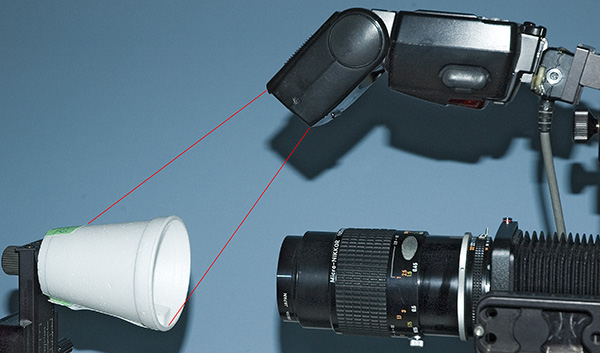 [71.68Kb] |
|
|
|
| Tony T |
Posted on 05-08-2008 15:53
|
|
Member Location: New Brunswick, Canada Posts: 664 Joined: 08.02.07 |
Here is a face view of the same fly, photographed as above
Tony T attached the following image: 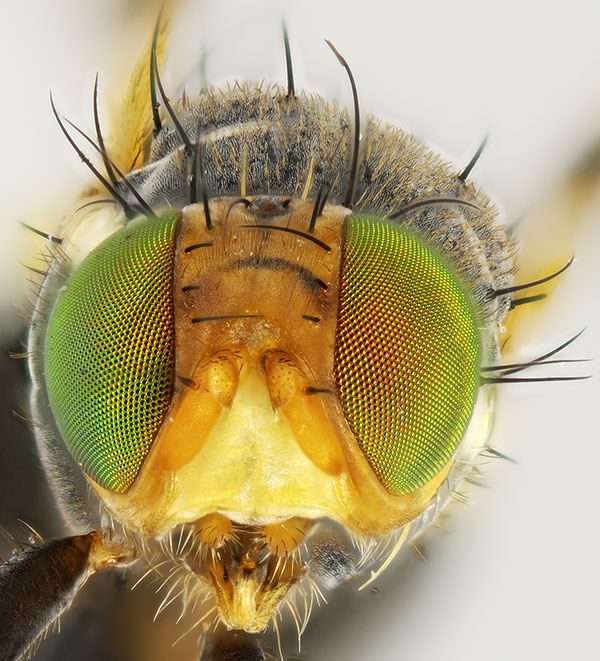 [123.15Kb] |
|
|
|
| Nosferatumyia |
Posted on 05-08-2008 16:36
|
|
Member Location: Posts: 3520 Joined: 28.12.07 |
The last picture looks to be combined with AutoMontage; did you try to use another software?
Val |
|
|
|
| jezlee |
Posted on 05-08-2008 18:12
|
|
Member Location: West Midlands, UK Posts: 195 Joined: 12.06.06 |
Hi Tony - just wanted to say I have just seen your shots and I think they are stunning! Are they single shots, or several montaged together to get the great depth of field?
Jez Lee www.uknature.co.uk |
| Tony T |
Posted on 05-08-2008 18:28
|
|
Member Location: New Brunswick, Canada Posts: 664 Joined: 08.02.07 |
Nosferatumyia wrote: The last picture looks to be combined with AutoMontage; did you try to use another software? Hi Valery and Jez: All my images of pinned flies on Diptera.info are stacks of many images combined with Helicon Focus 4.1 (new version is 4.5). The first face shot was from the full stack of 46 images - a poor selection. This following image is from the same set of images but from only the 1st 26; I think it's a lot better. Helicon Focus allows you to choose which images you want to include in the stack. I usually start the series with an out-of-focus image of the front and work back until I get a final out-of-focus image at the back. I then select the best middle images to form the final image. Hope this makes sense. I left the 1st face shot in for comparison. Tony T attached the following image: 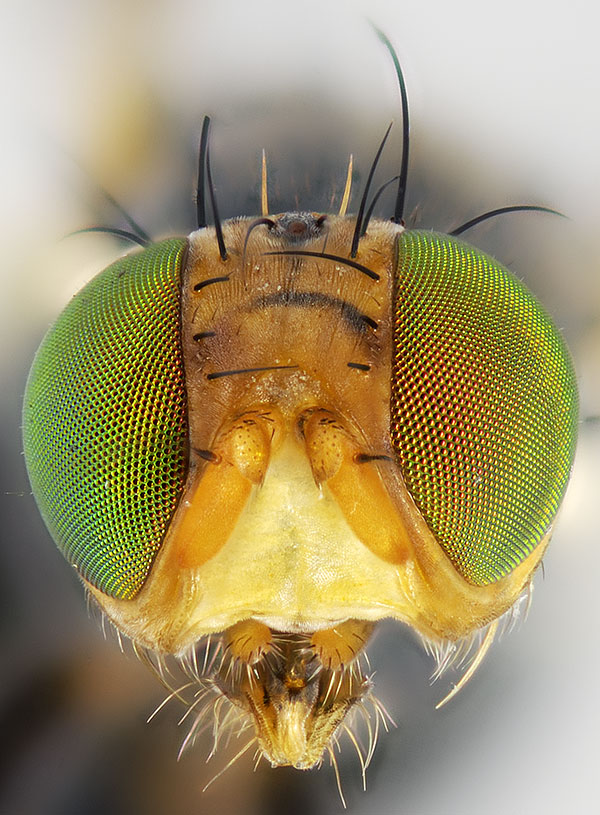 [150.29Kb] Edited by Tony T on 05-08-2008 18:31 |
|
|
|
| Nosferatumyia |
Posted on 05-08-2008 19:24
|
|
Member Location: Posts: 3520 Joined: 28.12.07 |
Hi Tony, thanks - The second picture looks really perfect, and I see that frontal setae were broken away in reality, not by the software. (I wondered why some setae are "cut" by underlying wrinkles and other sharp details.) The better quality of snapshots the more problems with sharp areas excluding each other. In my case, the hardware is too poor to expose results here in galleries, but at least in the cases like this one, to avoid losses of crossed details, I am making a sum of frontal details alone, middle layer and the background separately, and then make a sum again. I am using CZM, but it works pretty well, too.
Val |
|
|
|
| Tony T |
Posted on 05-08-2008 20:19
|
|
Member Location: New Brunswick, Canada Posts: 664 Joined: 08.02.07 |
I believe CombineZP is a very recent new version HERE |
|
|
|
| Jump to Forum: |


